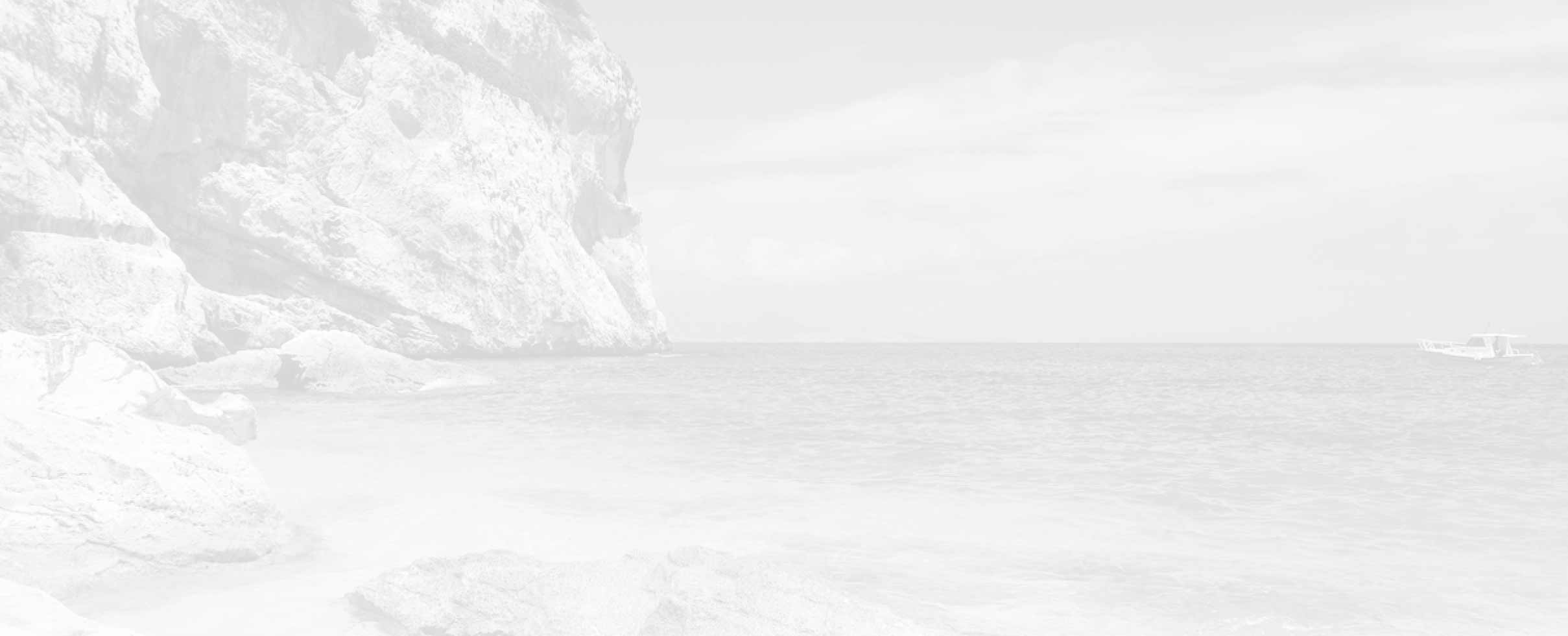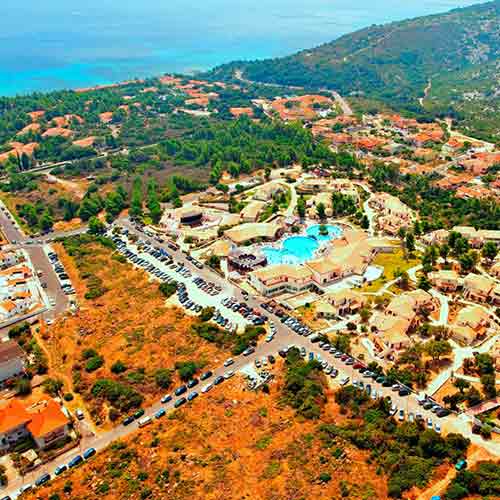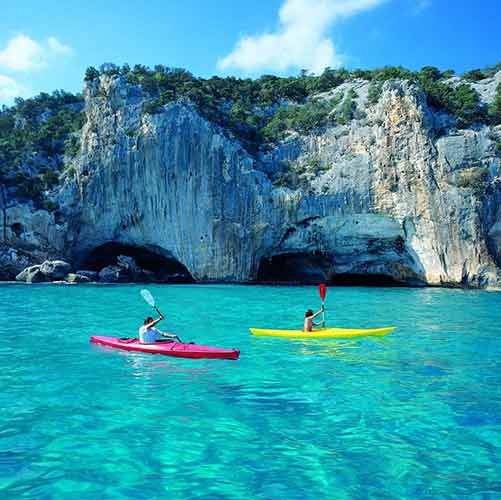




Until the 19th-century, Cala Gonone was just a small fishing village centered around a small harbor, but over the past 100 years it has grown into a notable tourist destination. The cause of the transformation was the tunnel built in 1860 through Monte Bardia, connecting Cala Gonone with Dorgali. It was along this dramatic winding road with wonderful views of the coast, with its white rocks, green aromatic Mediterranean shrubs, and cool blue water that the rest of the world happily made its way to visit.
Although the number of visitors to the island has increased, development along the coast has been limited, keeping long stretches completely free of any human settlement, totally unspoiled, and often only accessible from the sea. The jagged limestone coastline has many enchanting and secluded coves as well as deep caves that open onto the water which can be visited by boats that operate from Cala Gonone harbor.
Summer has arrived in Sardinia, bringing hot, dry weather. The area is often affected by a strong north-west wind, known as the maestrale. To check the current weather in Cala Gonone, click here.
Cala Gonone, on the eastern Sardinian coast, is reached by road from Olbia via the SS125, which follows the coastline south as far as Cagliari. A car is best for exploring the coast, but you'll need a boat to see some of the best coves in the area. For more information visit the Travel page.
There are good hotels close to the beach with plenty of facilities. Hotel Smeraldo has double rooms with bed and breakfast. For somewhere a little closer to the seafront, try the slightly larger Palmasea Village Resort.
Expect seafood on the coast but do try loval dishes from the interior, such as classic porceddu (spit-roasted pork). You should also try culurgiones (large ravioli) or malloreddus (a type of gnocchi). If you have room for dessert, try seada (fried cheese dumplings drizzled with honey).

You can opt to stay on the beach in Cala Gonone, bordered by the quay. Almost joined to it, a little farther south you'll find the long sandy beach of Palmasera, the largest on the coast and easily accessible from the coastal path on foot.
In the afternoon, try driving a little way south to Ziu Martine and Cala Fuili, two adjacent white-pebble beaches squeezed between cliffs. In the evening, relax by strolling around Cala Gonone and browsing in the craft shops in Via La Marmora.

Take advantage of the many boats in the tiny harbor waiting to whisk you away along the coast. Visit the Grotta del Bue Marino and then take the boat on to Cala Luna: a huge beach with a freshwater lake just behind surrounded by oleanders that color the sand with their pink and red patals.
To the north, the beach ends at a dramatic limestone spur that contains a deep cave system - experienced cavers with proper equipment might want to explore.